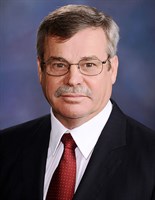 Gov. Greg Abbott has appointed Dr. Dan Hill, head of the Harold Vance Department of Petroleum Engineering at Texas A&M University, as one of nine members of the technical advisory committee to the Bureau of Economic Geology at The University of Texas at Austin. The committee will oversee the spending of $4.47 million for the purchase and deployment of seismic equipment, maintenance of this seismic network, and modeling of reservoir behavior for systems of wells in the vicinity of faults in Texas. The committee will advise the bureau on the use of the funding in conjunction with the TexNet Seismic Monitoring Program and collaborative research relationships with other universities and education entities in Texas, including the Texas A&M Engineering Experiment Station (TEES). The committee is also responsible for the preparation of a status report to the governor and legislature regarding possible induced seismicity.
Gov. Greg Abbott has appointed Dr. Dan Hill, head of the Harold Vance Department of Petroleum Engineering at Texas A&M University, as one of nine members of the technical advisory committee to the Bureau of Economic Geology at The University of Texas at Austin. The committee will oversee the spending of $4.47 million for the purchase and deployment of seismic equipment, maintenance of this seismic network, and modeling of reservoir behavior for systems of wells in the vicinity of faults in Texas. The committee will advise the bureau on the use of the funding in conjunction with the TexNet Seismic Monitoring Program and collaborative research relationships with other universities and education entities in Texas, including the Texas A&M Engineering Experiment Station (TEES). The committee is also responsible for the preparation of a status report to the governor and legislature regarding possible induced seismicity.
“In simple terms, induced seismicity is man-made earthquakes,” said Hill. “This is not about hydraulic fracturing per se, where tiny seismic events occur routinely but cannot be felt on the surface. Instead this study will focus on whether or not water injection, most commonly disposal water injection into deep aquifers, potentially causes earthquakes that could be felt at the surface.”

The map shows Texas seismic activity from 1973 to Feb. 2016. Green triangles represent existing seismic stations. Brown dots are recorded earthquakes. Base image courtesy of National Geographic Society.
The Bureau of Economic Geology, established in 1909, is the oldest and second-largest organized research unit at The University of Texas at Austin and is part of the Jackson School of Geosciences. It not only functions as the State Geological Survey of Texas, the bureau also conducts research regarding energy, the environment, and the economy. The bureau often works with federal, state, and local agencies, academic institutions, industry, nonprofit organizations, and foundations to conduct high-quality research and disseminate the results to the scientific and engineering communities as well as the general public.